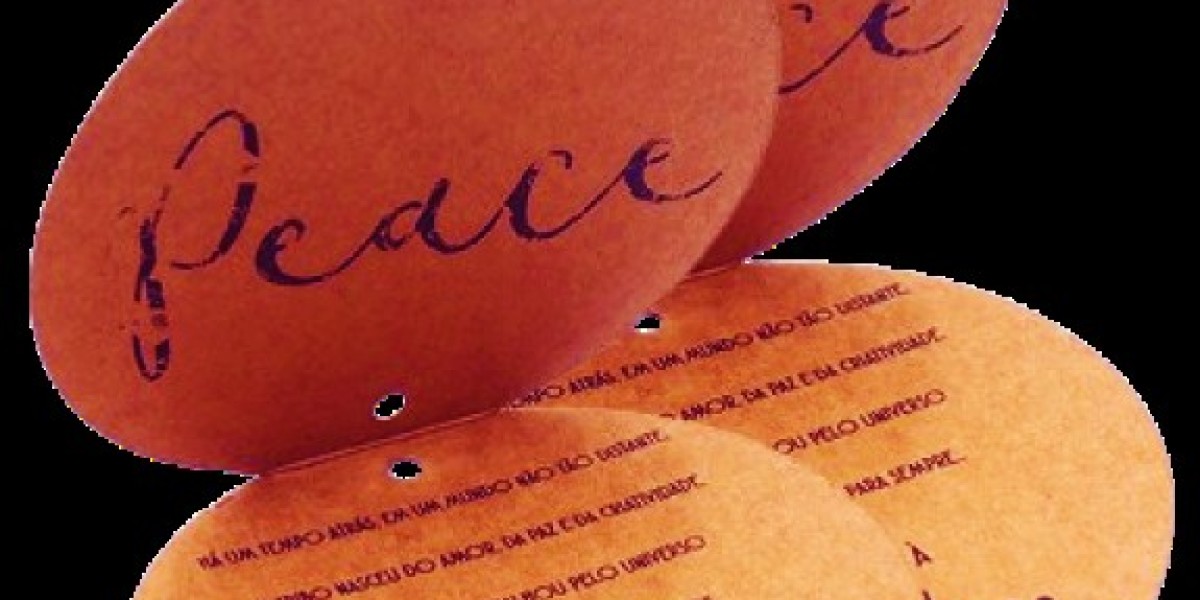Custom Jewelry Logo Tags are essential branding tools that enhance the presentation and professionalism of your jewelry pieces. These tags, designed to include your brand’s logo, product information, and additional details, serve both functional and aesthetic purposes. They can be crafted from a variety of materials, such as cardstock for a classic touch, kraft paper for a rustic appeal, plastic for durability, or recycled materials for an eco-friendly option.
Define Your Design Requirements
Design Elements
Logo:
The logo is the key design element of your custom jewelry tags. Ensure it is high-resolution and in a print-friendly format. Vector formats (.ai or .eps) are preferred for their scalability without loss of quality.
Tag Size and Shape:
Choose sizes and shapes that enhance the jewelry without overwhelming it. Common sizes include 1.5"x3" or 2"x2". Shapes can be customized to match your brand's style, such as circles, squares, or custom cuts.
Additional Information:
Decide what additional details to include, such as your brand name, website, or product specifics. Keep it concise to avoid clutter and ensure readability.
Material Choices
Cardstock:
A popular option for its sturdiness and quality. Available in various finishes like matte or gloss, it provides a professional look suitable for most jewelry.
Kraft Paper:
Ideal for a rustic or eco-friendly appearance. Its natural texture gives a unique touch and is biodegradable, appealing to environmentally-conscious consumers.
Plastic:
Durable and water-resistant, making it suitable for jewelry that may be exposed to moisture. Available in clear or colored options with various finishes.
Recycled Materials:
Enhances your brand's eco-friendly image. Options include recycled paper or biodegradable plastics, aligning with sustainable practices.
Create Your Design
Custom jewelry logo tags give us the opportunity to create designs. These are as follow:
Use Design Software
Adobe Illustrator or Photoshop:
Industry-standard tools for creating high-quality, detailed designs. Illustrator is great for vector graphics, while Photoshop is ideal for raster images and detailed edits.
Canva:
User-friendly and suitable for beginners. Canva offers a range of templates and a simple interface for creating customized designs quickly.
Design Tips
Keep It Simple:
Focus on a clean, uncluttered design. Ensure your logo is prominent and any text is clear and legible.
Consider Branding:
Use your brand’s colors and fonts to create a cohesive look. Consistency helps with brand recognition and professionalism.
Include Essential Information:
Choose key details to include, such as your brand name and logo. Avoid overcrowding the tag with too much information.
Design Specifications
Resolution:
Ensure your design is at least 300 DPI for clear, high-quality printing.
File Format:
They use vector formats like .ai or .eps, or high-resolution .png or .jpg files for printing.
Prepare for Printing
The Custom jewelry logo tags consist of the different printing methods which are as follow:
Choose a Printing Method
Digital Printing:
Suitable for high-resolution designs and smaller quantities. Ideal for intricate details and vibrant colors.
Offset Printing:
Best for larger quantities and detailed designs. Offers high-quality prints at a lower cost per unit for bulk orders.
Letterpress or Foil Stamping:
Provides a premium feel with embossed or metallic finishes. Adds a sophisticated touch to your tags.
Select a Printer
Online Printing Services:
Consider platforms like Vistaprint, UPrinting, or Moo for convenient and often cost-effective solutions.
Local Print Shops:
Offers personalized service and the ability to review materials and proofs in person.
Order Samples
Proof Your Design:
Always request samples to verify color accuracy, material quality, and overall design before placing a large order.
Order Your Tags
Place Your Order
Specify Quantity:
Determine the number of tags you need based on your inventory and sales expectations.
Confirm Details:
Double-check all design elements, material choices, and shipping information to ensure accuracy.
Review Production Time
Lead Time:
Understand the production and shipping timeline to plan for stock availability and delivery. Production times typically range from 5 to 10 business days.
Assemble and Attach Tags
Purchase Attachment Supplies
Strings or Twine:
Use for a simple and elegant way to attach tags to jewelry. Available in various materials and colors to match your brand.
Fasteners:
Plastic or metal fasteners can provide a more secure attachment, especially for larger or heavier tags.
Attach Tags
Manual Attachment:
Hand-tie or fasten each tag to your jewelry pieces, ideal for smaller quantities.
Automated Solutions:
For larger orders, consider automated tagging solutions to streamline the process and save time.
Conclusion
Creating your own custom jewelry logo tags involves careful planning and attention to detail. By defining your design requirements, choosing the right materials and printing methods, and ensuring proper assembly, you can produce high-quality tags that enhance your jewelry's presentation and reinforce your brand identity. Custom Brand Packaging allows businesses to tailor their packaging solutions to reflect their unique brand identity and stand out in the marketplace.
FAQs
What are the best materials for custom jewelry tags?
Popular choices include cardstock, kraft paper, plastic, and recycled materials.
How can I ensure my logo prints clearly on the tags?
Use high-resolution vector formats and maintain at least 300 DPI.
What is the typical lead time for custom jewelry tags?
Production times generally range from 5 to 10 business days, plus shipping.
Can I order a small quantity of custom jewelry tags?
Yes, many vendors offer small minimum order quantities, often starting at 100 tags.
What additional information should be included on the tags?
Essential details typically include your brand name, logo, and potentially a website or product information.








